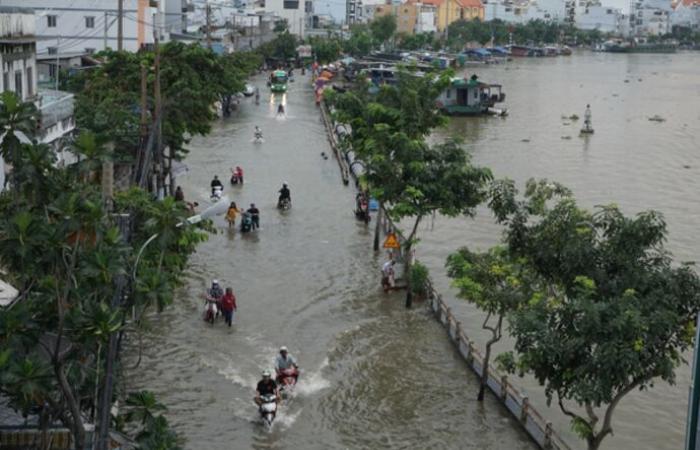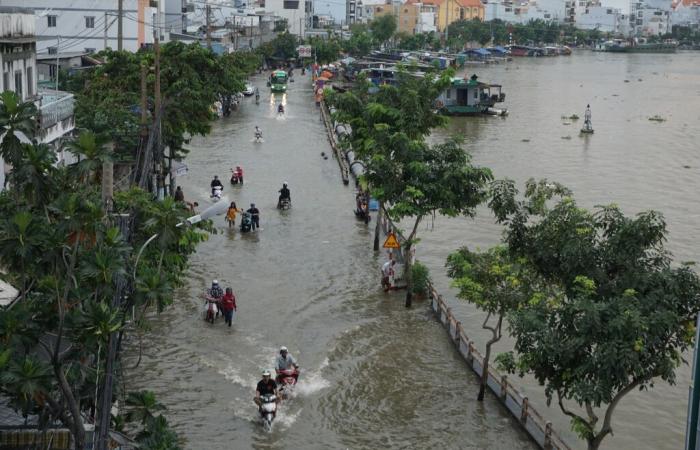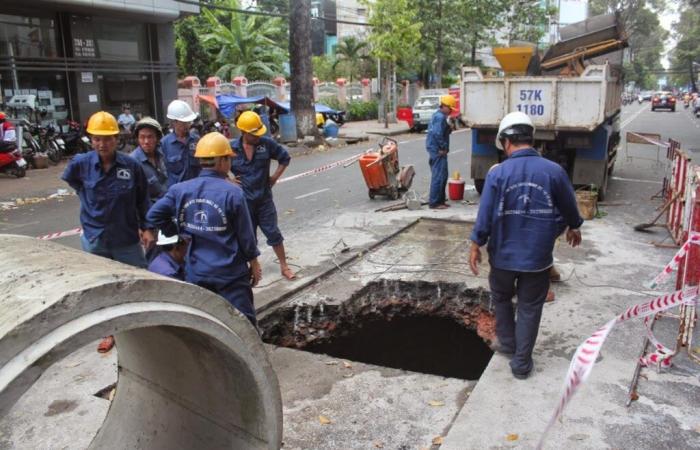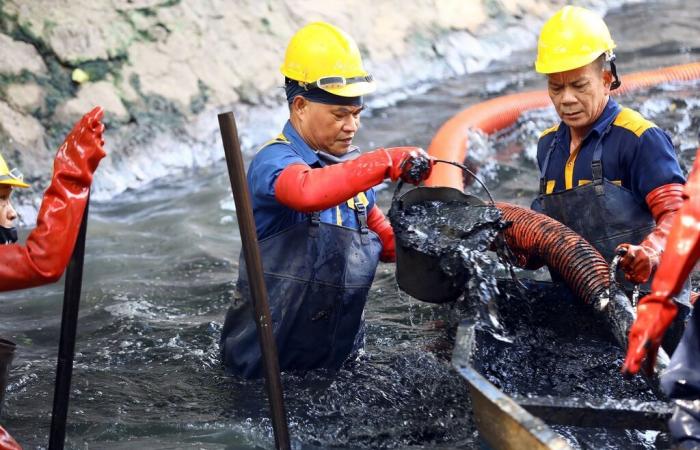>> Restoring agricultural production after floods: an urgent mission
>> Floods and landslides leave one dead, six missing
>> Prime Minister highlights experiences in response to Typhoon Yagi
| Dôi Cân Street in Hanoi is under water following heavy rains. |
| Photo : VNA/CVN |
The recent super typhoon Yagi hit the north of the country hard, leaving behind a heavy human and material toll. The devastating floods, which affected both the plains and the mountains, demonstrate the intensification of extreme weather phenomena linked to climate change.
Despite tens of trillions of dong invested in flood prevention projects, these two cities remain vulnerable to heavy rains. Recent events show the inadequacy of these measures and the urgency of adopting a more global and sustainable approach.
An increasingly pressing challenge
Architect Ngô Viêt Nam Son, president of NgoViet Architects & Planners, believes that rampant urbanization, by artificializing and concreting waterways, considerably reduces their flow capacity, thus increasing the risk of flooding. To sustainably stop this scourge, municipal authorities must adopt a global and coherent approach to town planning. It is imperative to preserve natural spaces, particularly in areas located along rivers and canals, which play an essential role in water regulation.
| A road flooded following heavy rains in the 7e district in Ho Chi Minh City. |
| Photo : VNA/CVN |
Ho Chi Minh City is cited by Mr Son as having filled in canals for decades to build box culverts, which have high drainage capacity, making dredging and maintenance easier. But, he emphasizes, nothing can replace canals which, in addition to their capacity to store large quantities of water, play an essential role in regulating the water cycle and preserving biodiversity.
In Hanoi, each rainy season transforms many streets into veritable rivers, reflecting the chronic inability of infrastructure to handle heavy rainfall. According to the Municipal Transport Service, the capital has around thirty black spots that are systematically flooded during heavy rains. Among the most affected, we find Nguyên Khuyên streets, the Phan Bôi Châu – Ly Thuong Kiêt intersection, as well as Thang Long avenue, a real artery of the city.
According to the Dr. Dào Ngoc Nghiêm, vice-president of the Vietnam Urban Planning and Development Association, recurrent flooding in Hanoi is mainly due to the obsolescence and inadequacy of the sewerage and drainage network. The city is divided into three drainage areas: the northern area and the left and right areas of the Day River. However, the downstream pumping stations were not built.
Mr. Nghiêm shared the experience of other countries in flood prevention and control, showing that 3% to 5% of the land surface should be used as regulating lakes. However, Hanoi today only has around 2%, or the equivalent of 6,000 ha of lakes. Although the capital has numerous canal systems, many of them have been filled in and the full potential of the system has not been realized.
A sustainable strategy and vision
Flood prevention projects in urban areas across the country are therefore necessary but insufficient, particularly in the current context of extreme climate change. Solving the flood problem requires a sustainable strategy and vision.
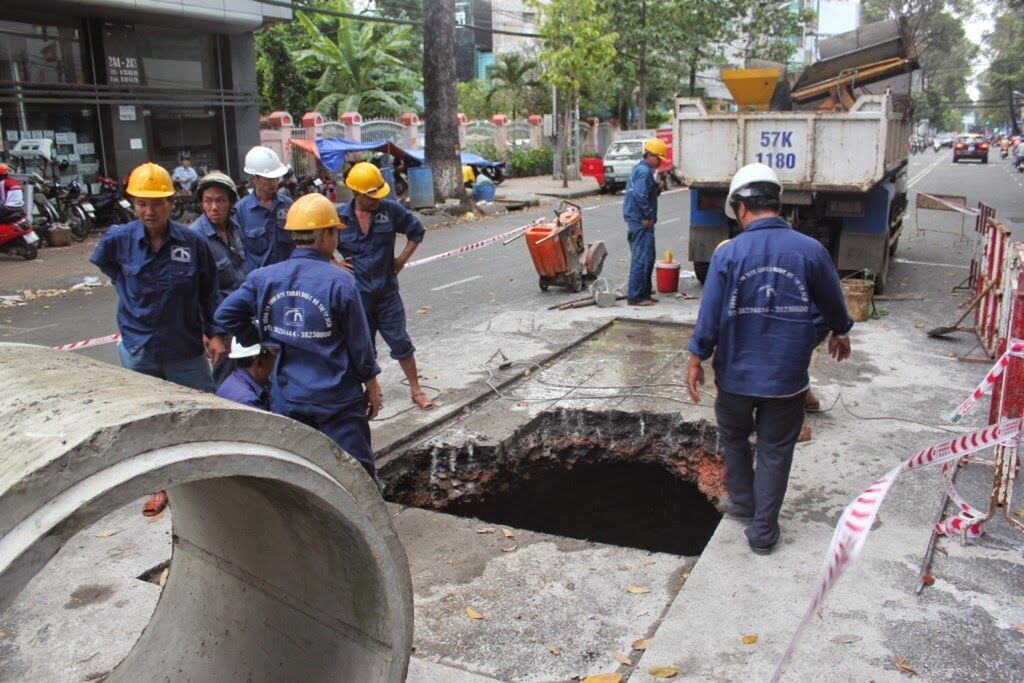 |
| Restoration of a degraded sewer in Ho Chi Minh City. |
| Photo : CTV/CVN |
For Ho Chi Minh City, experts advise reassessing the effectiveness of flood prevention projects implemented in the past, both to learn lessons for future projects and to monitor the results of the work. At the same time, the city should strengthen cooperation and share experiences with other cities around the world. From there, it is possible to minimize the impact of flooding and move towards a more sustainable future for the population and the community.
As for Hanoi, Mr. Nghiêm says the best way is to quickly adjust drainage projects. In addition, it is necessary to regularly maintain and repair the canal and sewer network. In particular, the capital needs a comprehensive study policy for the river network that crosses it.
Hanoi is currently accelerating the implementation of many major projects aimed at improving its drainage system and preventing flooding. Among these initiatives, we can cite the modernization of pumping stations, the regulation of lakes and the construction of new wastewater evacuation networks, particularly in the western part of the city. At the same time, several large-scale projects are being prepared, such as the establishment of a rainwater drainage system in the Nhuê River basin, both on its left bank and in the Hà Dông district located on its right bank.
Three sanitation projects, financed by the People’s Committee of the Long Bien district, have just been approved by Hanoi City Hall. Climate change and flooding are no longer the preserve of urban centers: they now affect all regions of the country. Faced with this growing threat, Vietnam has increased policies and programs aimed at adapting to climate change and building more resilient cities.
Climate change and flooding are not only occurring in central cities, but have spread to all regions. To prevent natural disasters, Vietnam has issued numerous policies, strategies and related programs, aimed at responding to climate change and developing sustainable urban areas. However, adaptation to climate change in urban planning still has limits.
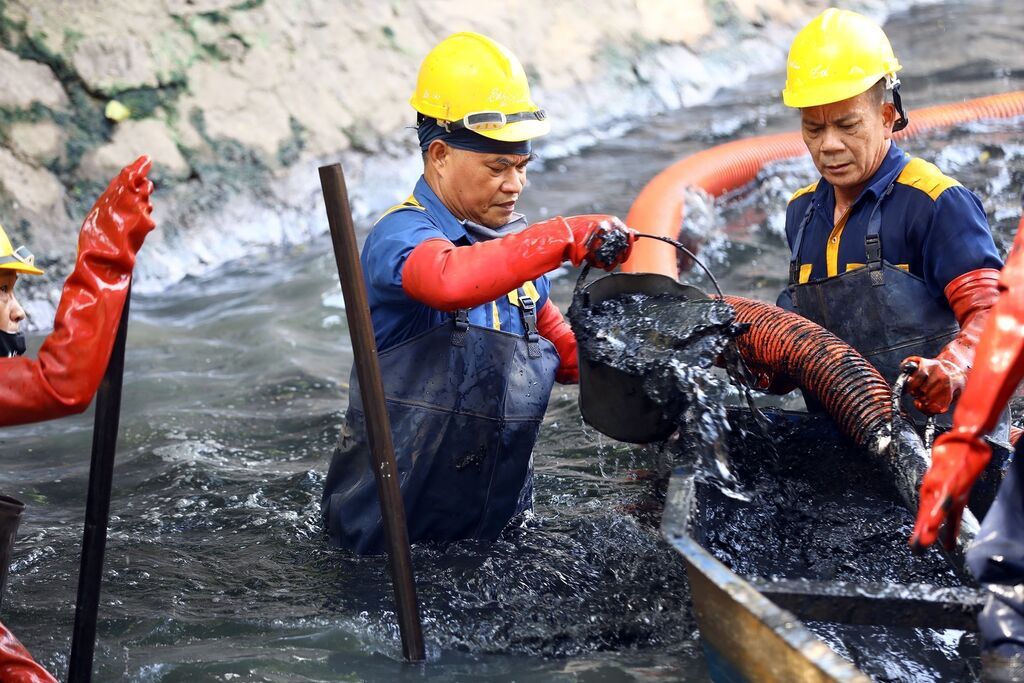 |
| Cleaning a canal in Hanoi. |
| Photo : VNA/CVN |
According to Director of the Department of Science, Technology and Environment of the Ministry of Construction Vu Ngoc Anh, to be resilient to climate change, urban areas should be moderate in size and have adaptive capacity. sufficient. Vietnam will soon have to approve the urban and rural planning system for the period 2021-2030, with a vision to 2050.
During the question-and-answer session before the National Assembly last June regarding flooding in urban areas, Minister of Construction Nguyen Thanh Nghi also proposed a number of solutions. This involves improving laws relating to drainage and wastewater treatment, including developing the Town and Country Planning Act, the Water Supply and Drainage Act, and the Development Management Act. urban. He also said there was a need to improve the quality of construction planning and town planning management.
Huong Linh – Thu Hang/CVN

